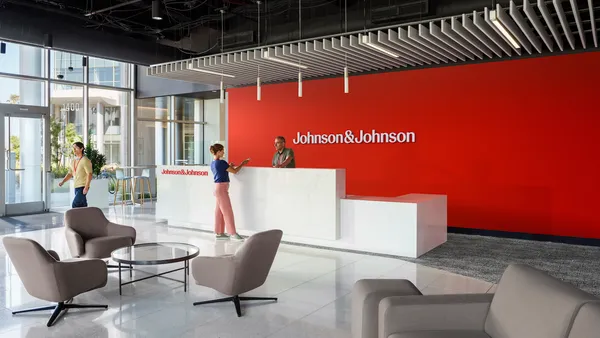Dive Brief:
- While supply chain visibility and transparency are top priorities for the 623 companies surveyed, companies are struggling to meet their visibility goals, according to Geodis' 2017 Supply Chain Worldwide Survey.
- Only 6% of 623 respondents said they had full visibility within their supply chains, despite supply chain visibility being the third most important priority in 2017, up from #6 in 2015.
- On time, in full (OTIF) deliveries and product availability or delivery where the top two priorities for supply chains, according to the report.
Dive Insight:
It's becoming increasingly dangerous for customers to ignore their supply chains, as rising consumer expectations demand both higher product availability and corporate transparency.
Nowadays, corporations must be able to ensure they have inventory on-hand within a few days of the consumer, and can say where it comes from and how it is made. If companies cannot achieve this, they may face steep consequences. Nike, for example, faced protests and boycotts over its supply chain practices, while Unilever took the hint and committed to transparency about its sources.
It's no wonder visibility is rising the ranks when it comes to priorities, just behind OTIF and delivery issues.
There's no shortage of innovation to address the issue: supply chain visibility is a huge buzz phrase, with many kinds of startups developing tools and cutting edge tech — blockchain and artificial intelligence, for example — to help companies achieve full visibility of their supply chains.
Nina Luu, co-founder and CEO of Shippabo, a cloud-based supply chain management platform, said visibility and transparency are definitely trends for the industry right now, but can't be achieved only by adopting new technology. Perhaps it is not really a resource problem, but a communication problem.
"I think transparency and visibility in supply chains are really beyond technology," Luu told Supply Chain Dive. "Real transparency takes businesses and their partners to communicate with each other, that’s what drives transparency."
When companies communicate with all links of their supply chains about visibility and transparency goals, visibility is more achievable. Usually that requires a top-down initiative, which means top-level management needs to be involved.
In fact, according to the Geodis survey, companies "that have chosen to appoint a supply chain leader as [a] board member are more likely to see their EBIT level rise." 57% of respondents said they considered their supply chain a competitive advantage, so it naturally follows that supply chain leaders be involved in major company decisions.
As it turns out, companies may need to shuffle management and hone their visibility strategies if they want to improve visibility of their supply chains — because tech solutions such as blockchain simply aren't enough.













